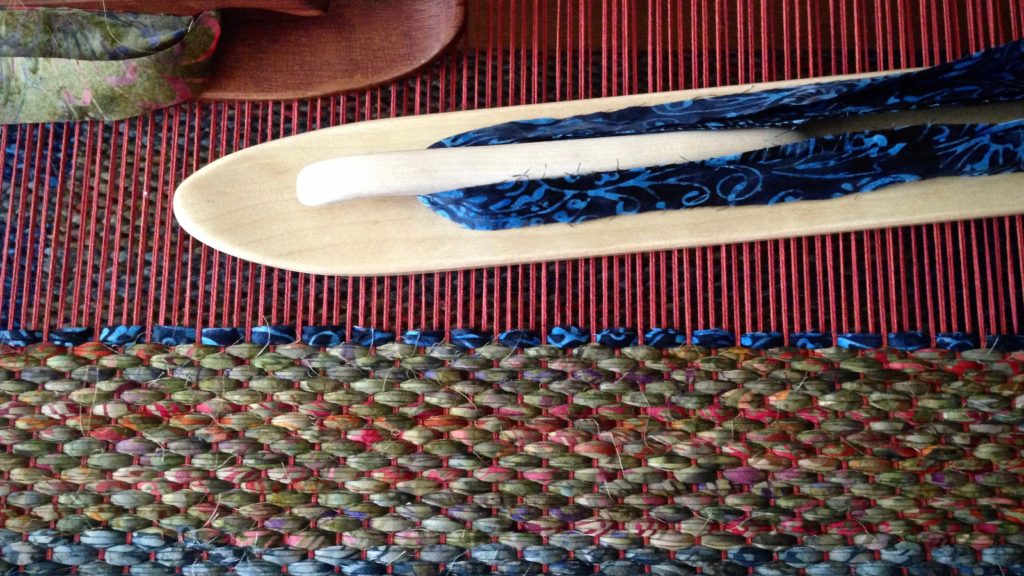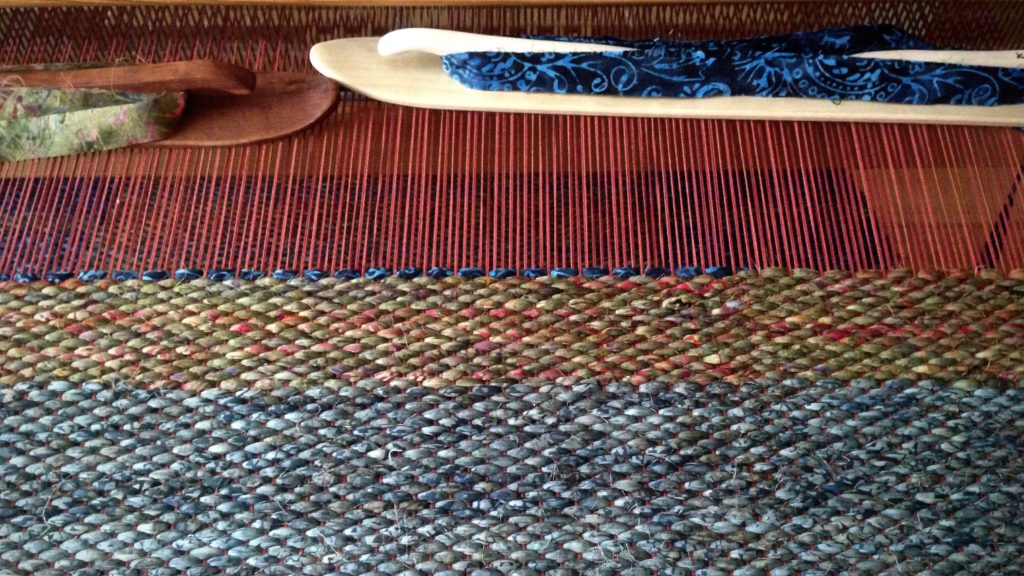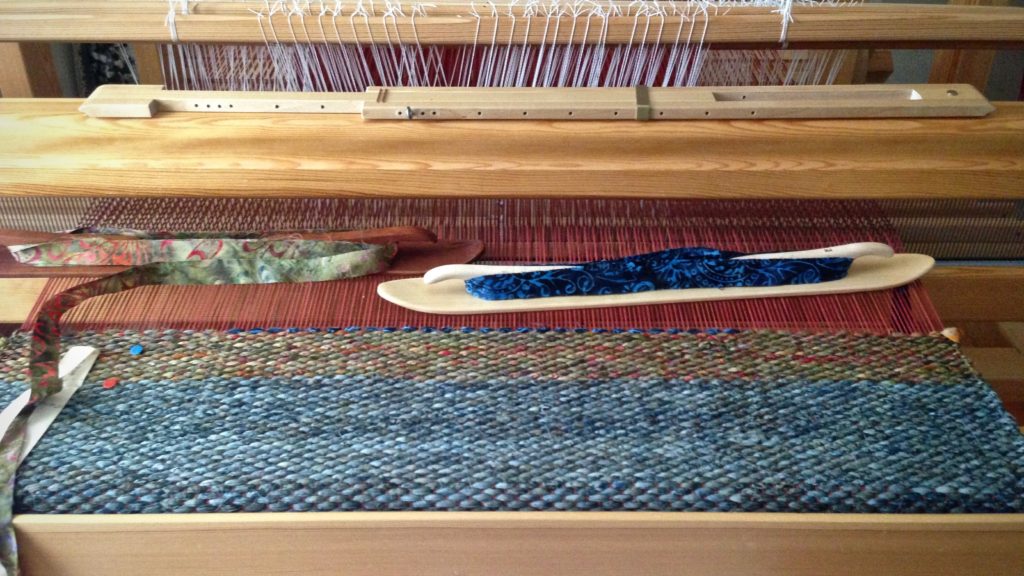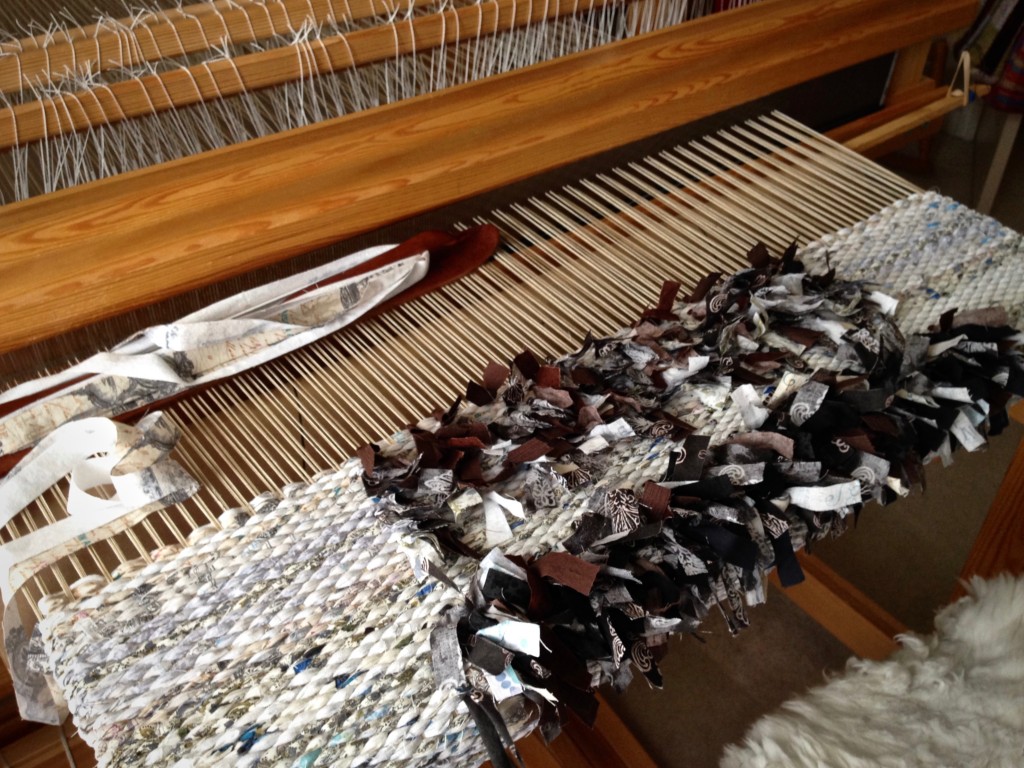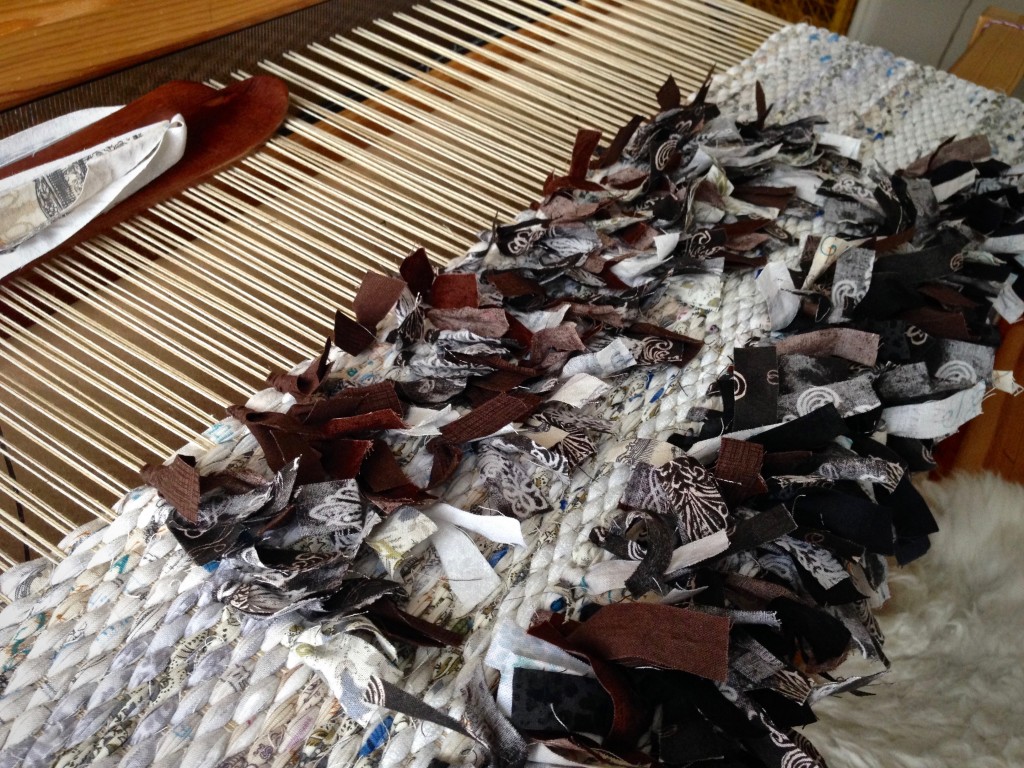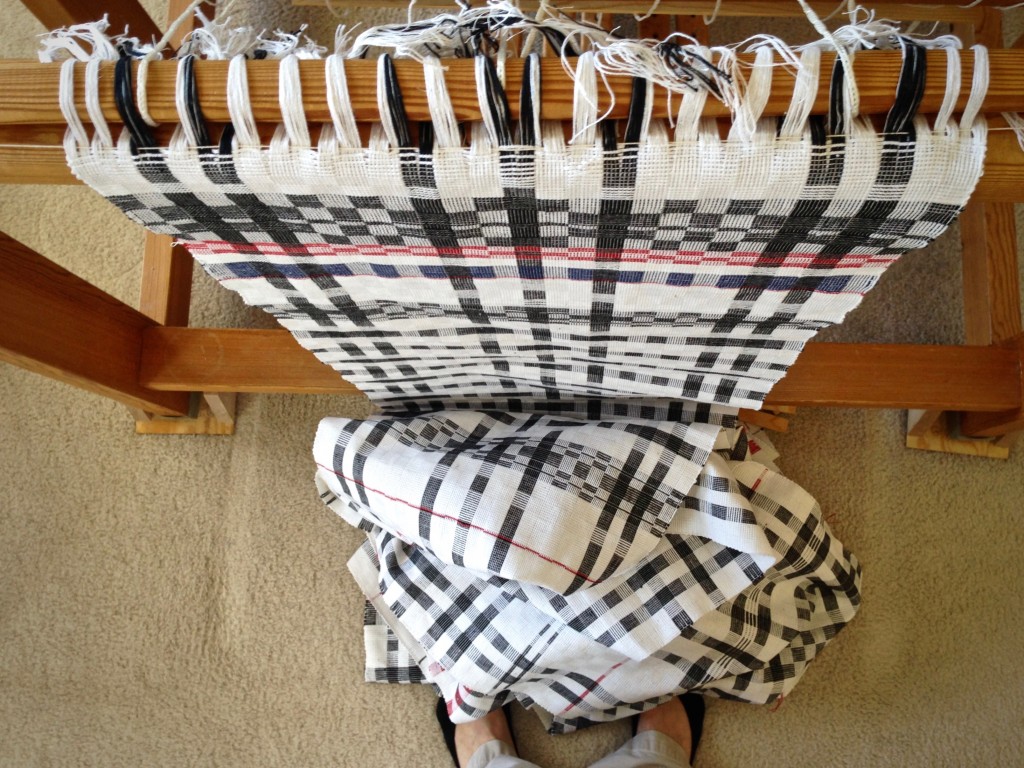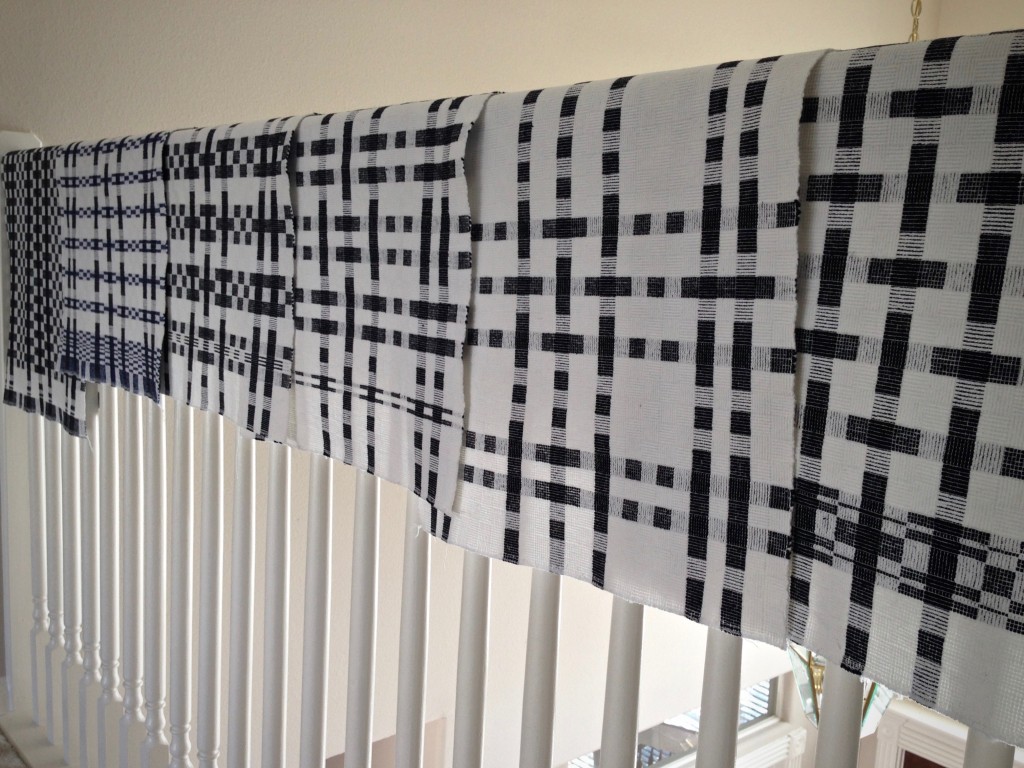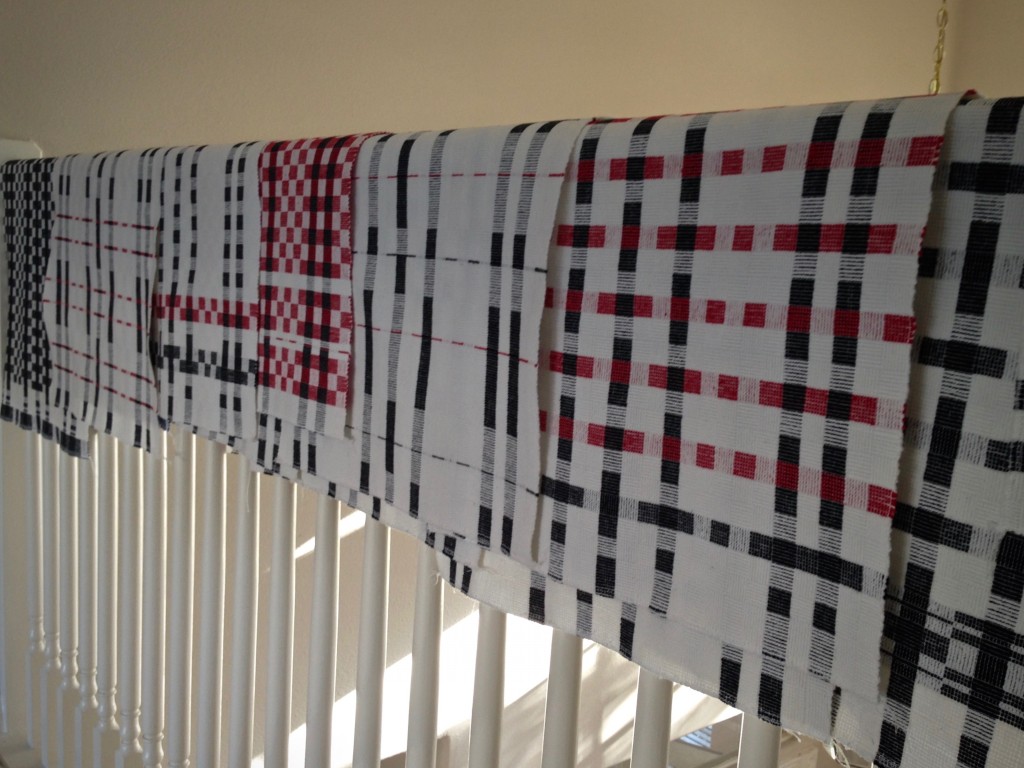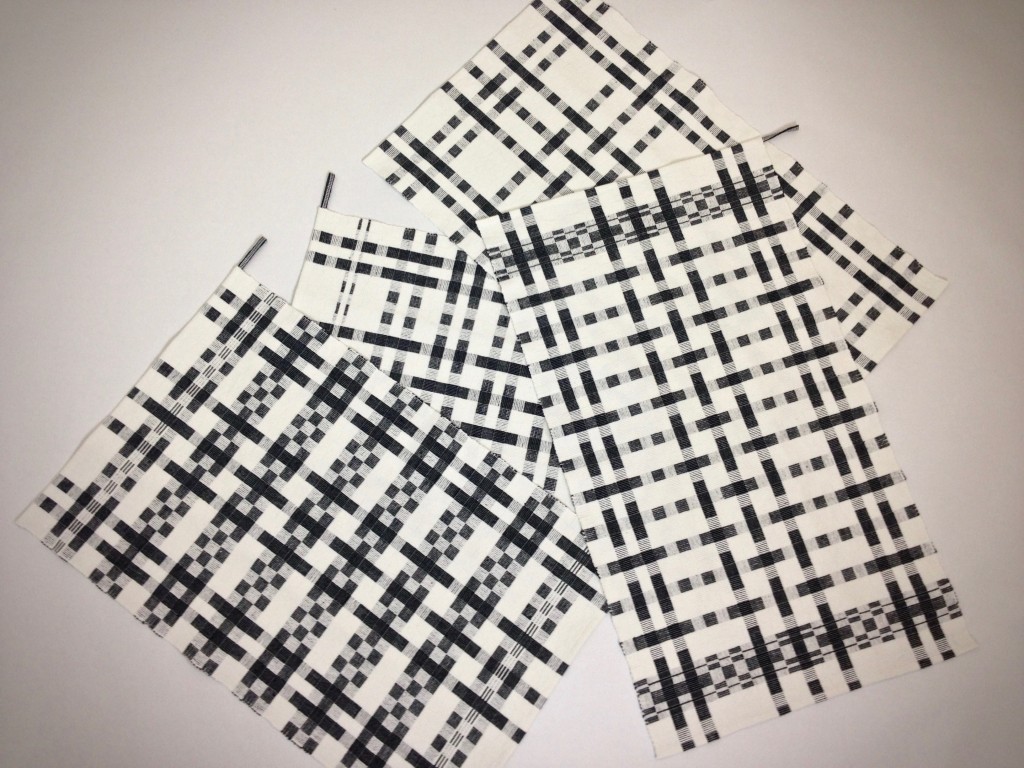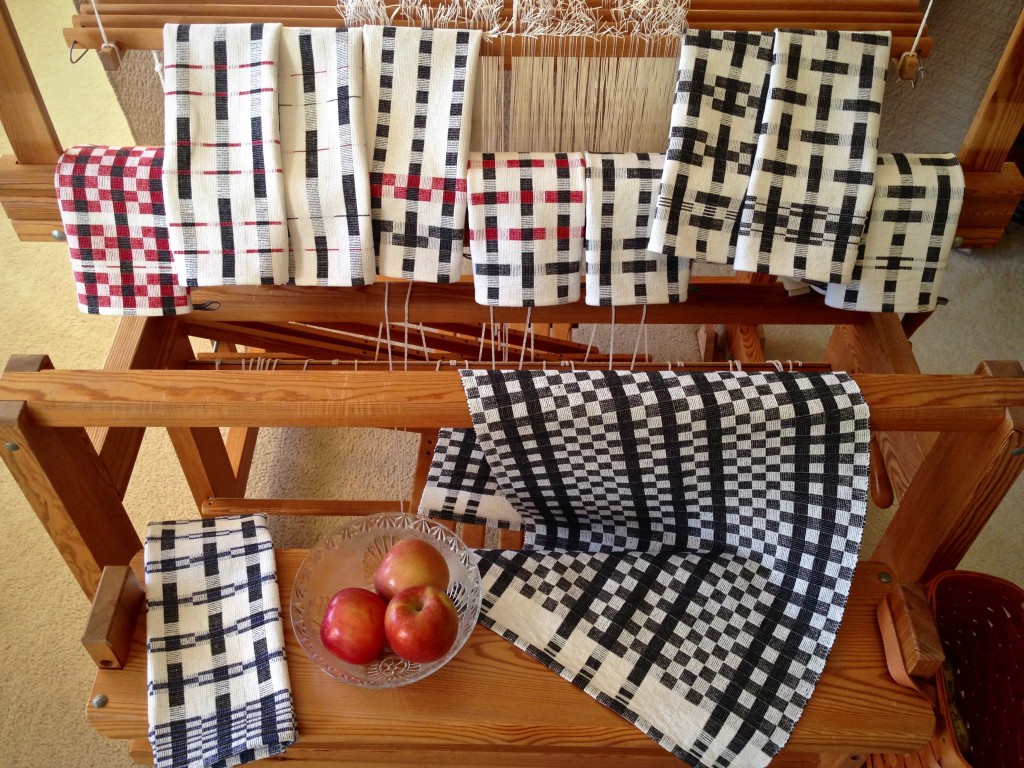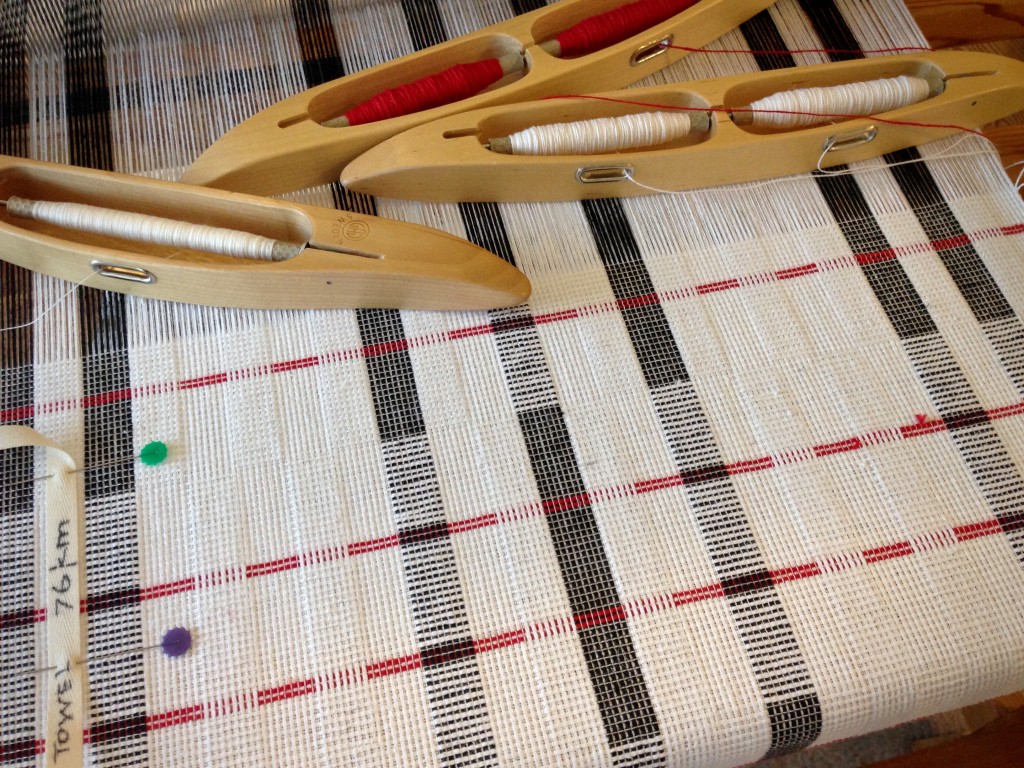What can you do with odds and ends? Plenty. I do use new cotton fabric for my rag rugs. But I refrain from buying new fabric until I absolutely have to. It’s a good challenge to combine available colors from previous rag rug projects to make a new design. There are two piles of color for this double binding rag rug. The blue pile and the brown/black pile. The color blocks switch places in the rug about every seventeen centimeters, with a three-pick white chain pattern in between.
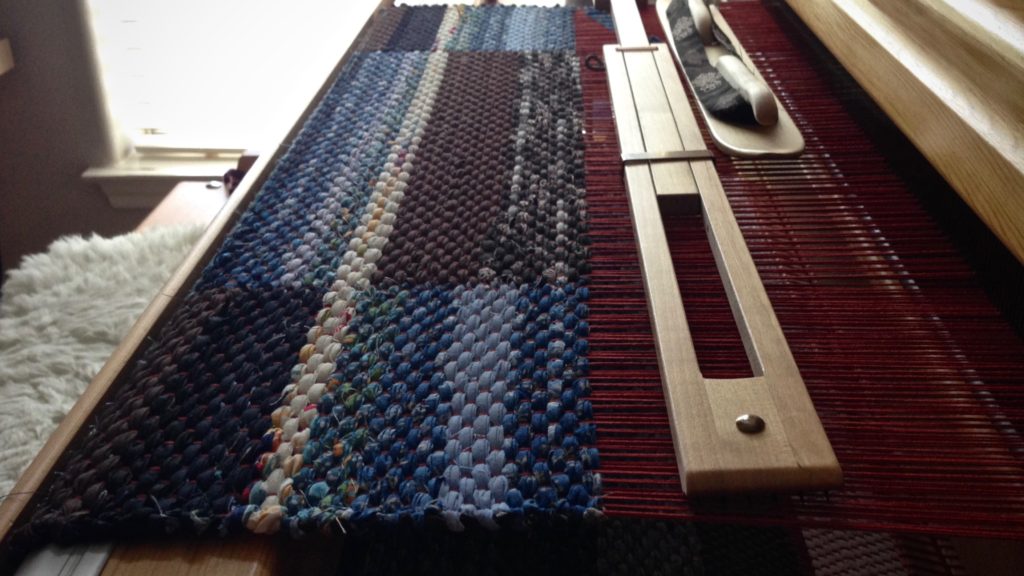
I enjoy combining multiple shades of a color, such as the blue in this rug, to add character. Every odd fabric strip finds a place to belong. It ends up looking cozy and friendly. All the mismatched pieces somehow fit together.
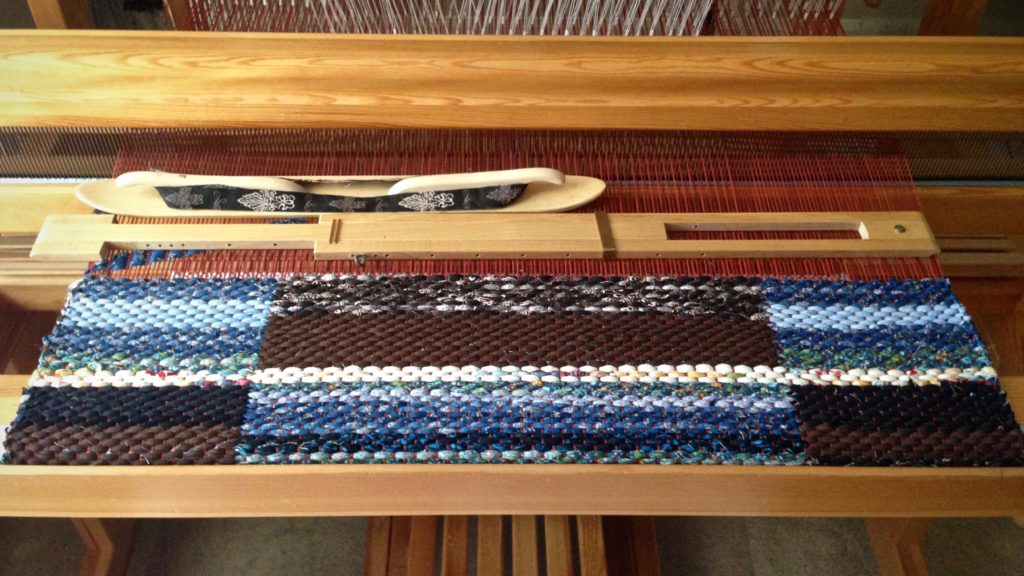
We belong to somebody. We belong to the one who made us–the Creator of everything. He weaves the fabric strips together to make his beautiful design. Scraps become useful, and colors are mixed and rearranged in interesting ways. Together, the woven mixture has a purpose. A rag rug, made from odds and ends like us, puts the creativity of our Maker on display.
May you know where you belong.
Love,
Karen

